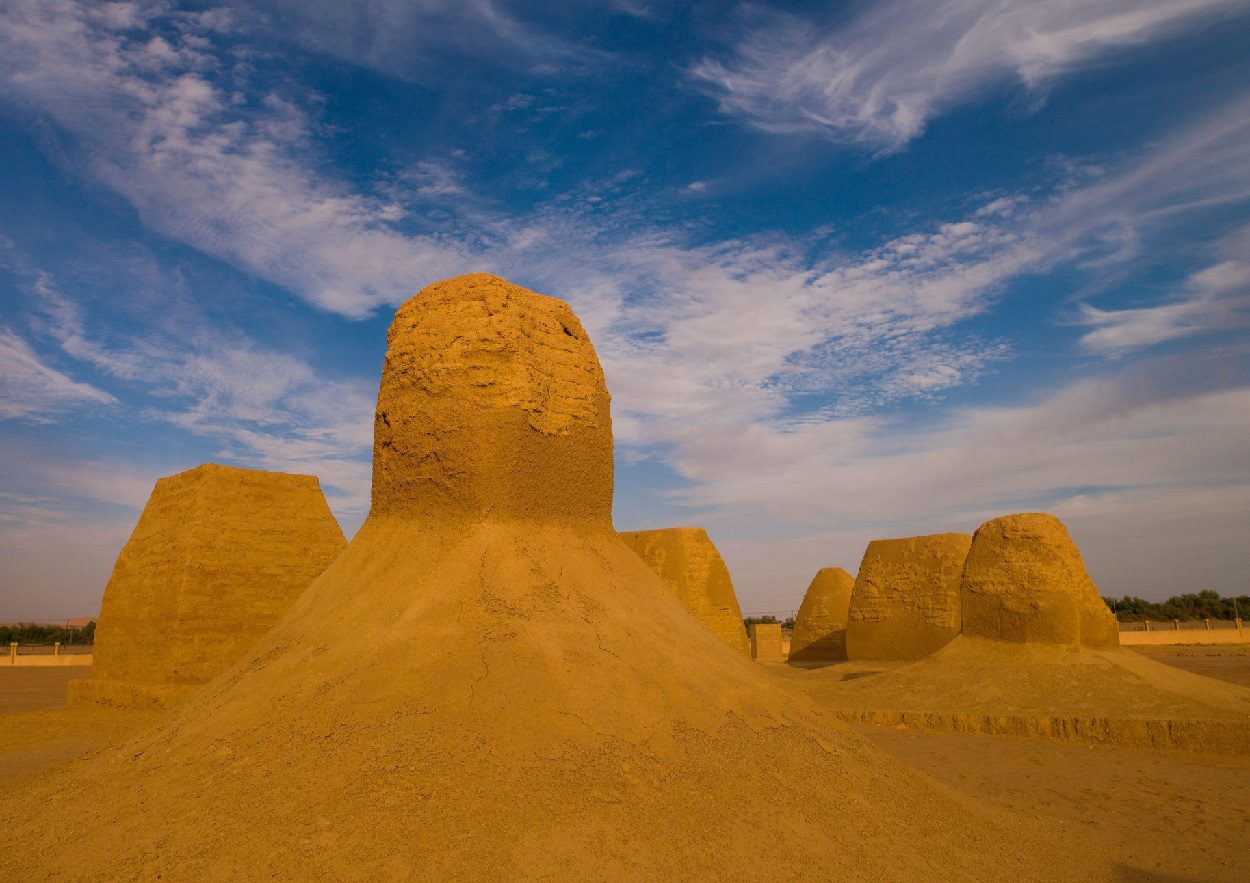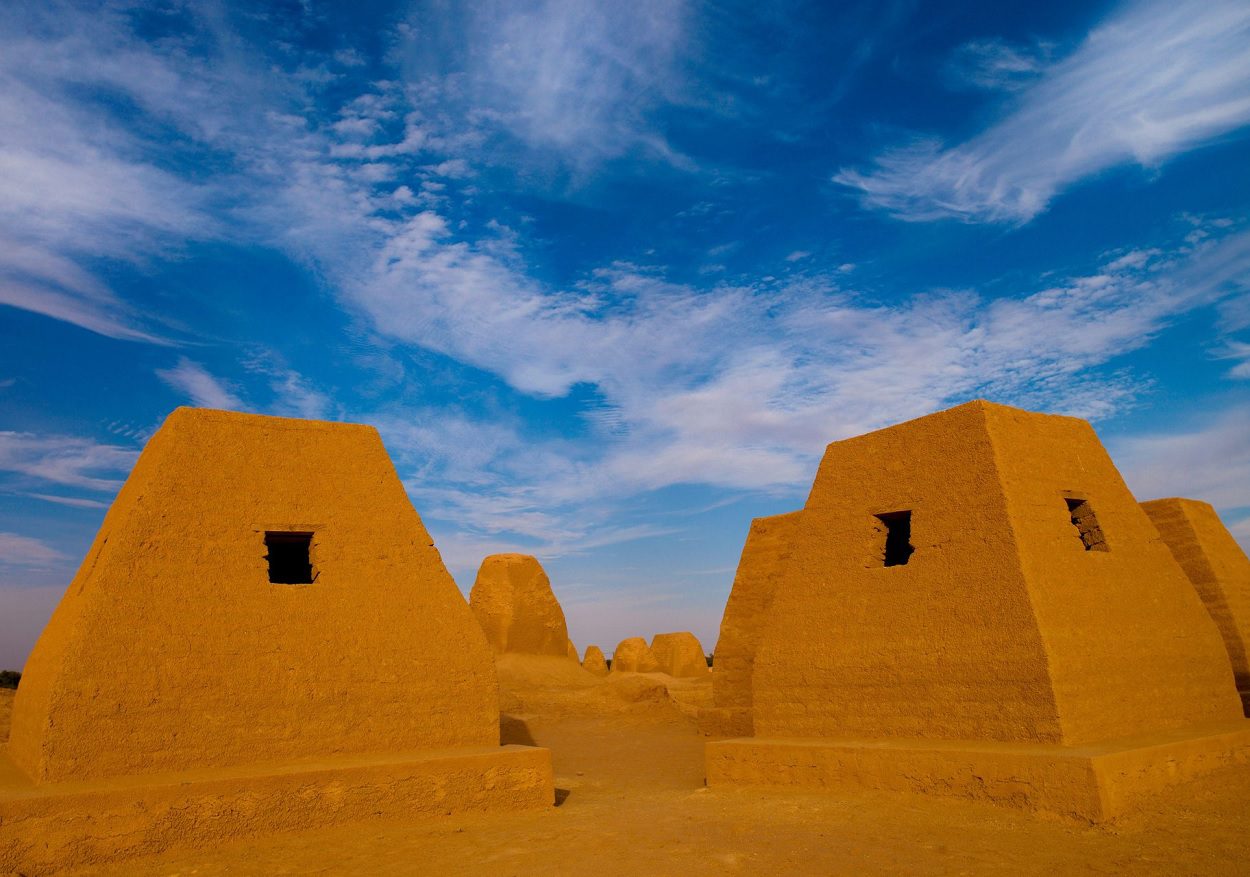Several pyramidal necropolises exist in Libya from the reign of the Garamantes, a kingdom that emerged as a major regional power in the Sahara during the mid-2nd century AD.
Archaeological evidence at Wadi Ajal suggests that the Garamantes first settled in the Fezzan region of southern Libya around 1100 BC. The growth and expansion of the civilisation relied upon a sophisticated and extensive qanat irrigation system known as “foggaras”. This system facilitated a thriving agricultural sector that sustained a sizeable populace in desert regions defunct of large bodies of water.
The first reference to the Garamantes dates from the 5th century BC by the Greek historian and geographer, Herodutus. Herodutus describes the Garamantes as “a very great nation” that was living in an oasis in the middle of the Sahara Desert, thirty days journey south of the Lotophagi. Herodutus also described how the Garamantes hunted “the Troglodyte Ethiopians in four horsed chariots”. These “cave-dwelling Ethiopians” are most likely the Tebu of the Tibesti Mountains.
At its peak, the Garamantes kingdom spanned roughly 180,000 km2, centred on the capital of Garama in the Wadi el Agial region, also called Wadi el Haya. The wadi is a long valley enclosed by the Erg (the Sand Sea) of Ubari, and on the southern side by the Messak Saffatet, an arid plateau.
Wadi el Agial was the nucleus of the kingdom where a majority of Garamantes settlements and monuments are located, including Garama and the former capital of Zinkhecra, the Royal Necropolis, Kharaig, Ubari, Hatiya, Ksa Bint Baya, and Bab el Macnusa.

The Garamantes’ funerary rituals and burial monuments point to a belief in an afterlife that can be compared to that of the Ancient Egyptians. They constructed pyramidal necropolises such as Kharaig on the slopes of the Messak, a burial complex consisting of 80 square and rectangular mud brick pyramids reaching heights of 10 to 15 feet.
A similar necropolis of pyramidal tombs is found at El Hatiya, containing 25 truncated monuments in a pyramidal form. It is theorised that the tombs may have been orientated to star constellations based on an archaeoastronomical study.
At the Royal Necropolis south of Germana are over 100 grouped tombs of mastabas and circular tumuli which have stelae and funerary “offering-tables” for the cult of the dead. The majority of the stelae were decorated with red ochre or pigment, and in some cases also with subsequent and repeated layers of daub or plaster.
During the Roman period, the Garamantes conducted raids across Rome’s African frontier, the Limes Tripolitanus, against Roman coastal settlements and ports. In AD 203, Emperor Septimius Severus, launched a major campaign deep into the Sahara and captured Garama but abandoned the city shortly after.
It is possible that the decline of the Garamantian kingdom resulted from a combination of unfavourable climate conditions and excessive use of limited water resources. With the collapse of Byzantine rule in North Africa, an Arab force raided across the Sahara in AD 666, presumably bringing about the end of the Garamantes kingdom.
Header Image Credit : Eric Lafforgue (Alamy) – Under Copyright





